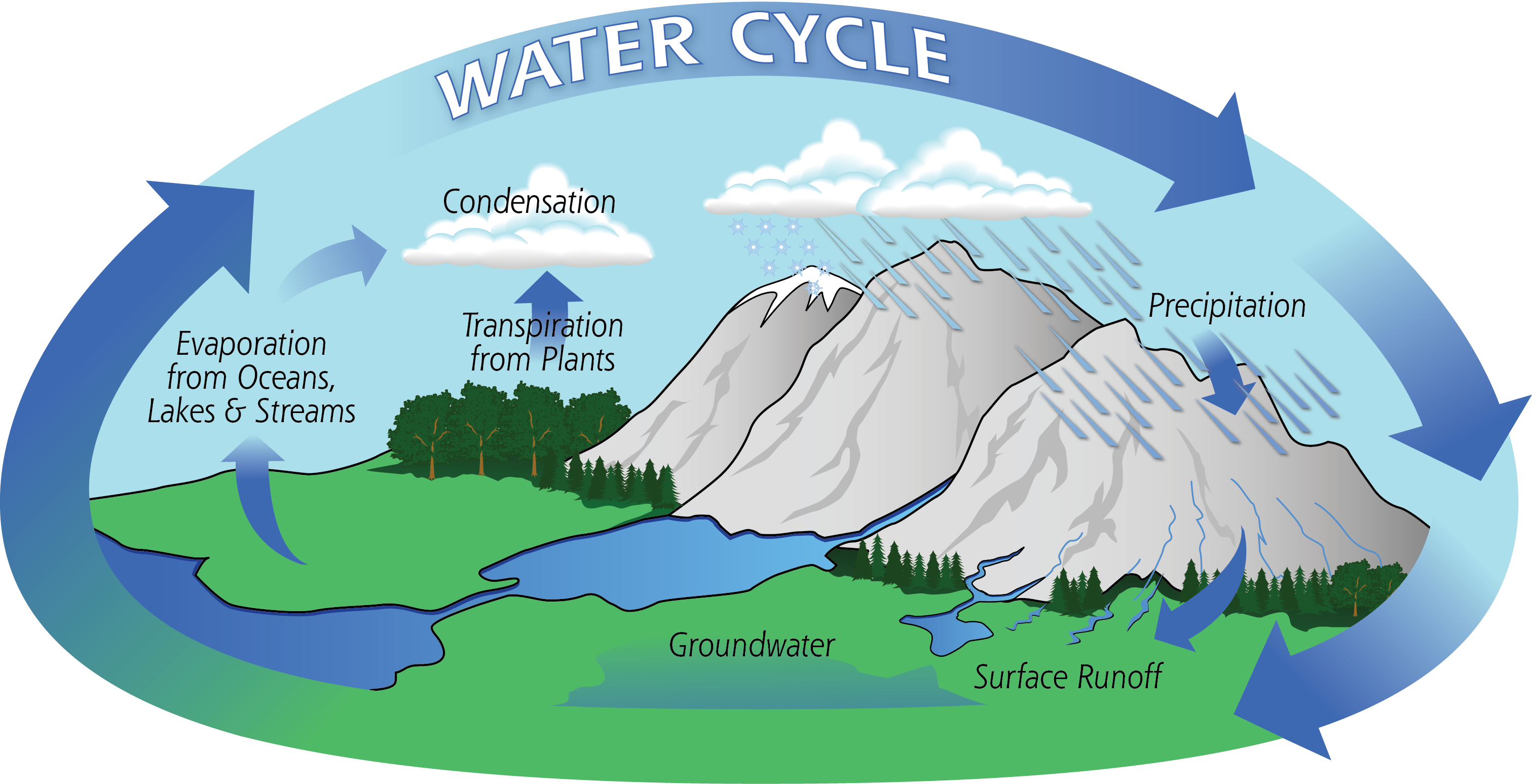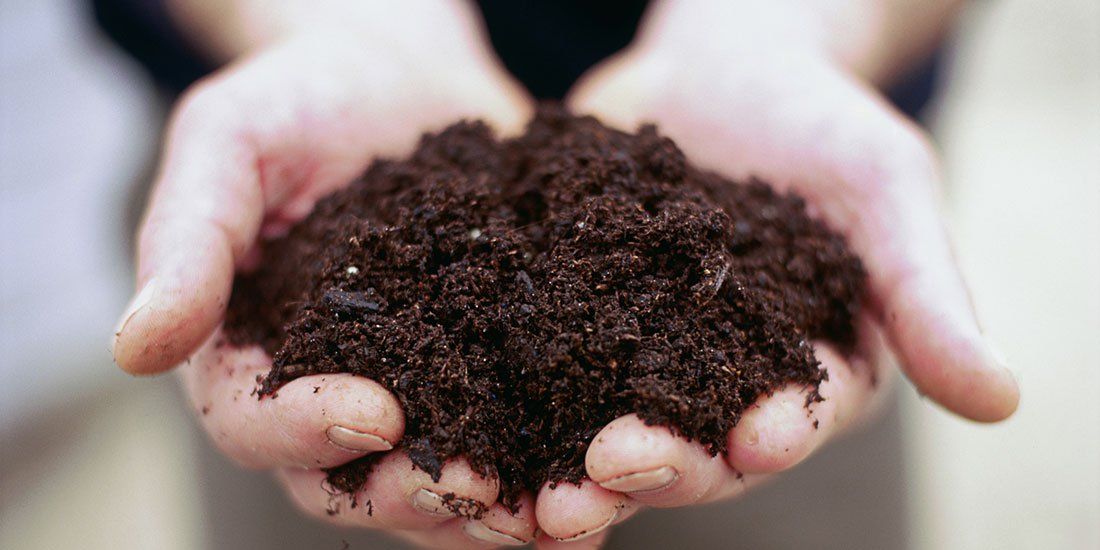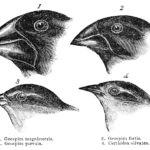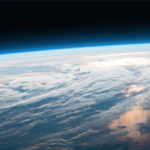The amount of water gas or vapor in the air varies greatly from location to location. In some areas, such as deserts, the amount of water vapor in the air can be almost zero. In other locations, such as in rain forests and above the oceans, the amount of water vapor in the air can make up almost 4% of the total volume of gases in a particular area.
The amount of water vapor not only changes from location to location, but also can rapidly change over time in the same location. An area might be humid one day, and much drier the next.
Water leaves the surface of the Earth through the process of evaporation. It can later return in the form of condensation. This process is known as the hydrologic cycle. Or more commonly as the water cycle.
During the water cycle, water moves through the Earth’s environment, from one reservoir to another. A reservoir is what scientists call any place where water is stored.
The largest reservoir is the ocean. Water is also found in the atmosphere, as well as on the ground, such as in lakes, ponds, rivers and so forth. We can also find water under ground, and locked up in vast sheets of ice.
When water moves from one reservoir to another, we call this movement a flux. Examples of fluxes include evaporation and condensation. Water is constantly fluxing, or moving throughout the world, completing this cycle over and over again.






